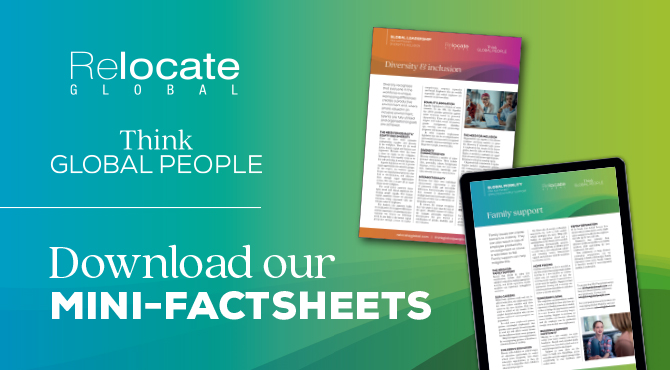Driving change: Growing women in leadership
Women are making clear progress in board representation and senior leadership roles, but more needs to be done to achieve gender equality. Dr Sue Shortland reports on the latest data from the FTSE Women Leaders Review.

This article is taken from the Summer 2025 issue of
Think Global People magazine
View your copy of the Summer 2025 issue of Think Global People magazine.Background
Vivienne Artz OBE, CEO of FTSE Women Leaders Review, presented the latest findings on women on boards and in leadership at a recent Westminster Employment Forum event on Next Steps for Women in the Workplace.The FTSE Women Leaders Review was set up in 2011 by Lord Davies. At the time, 9.5% of the FTSE 350 boards (the largest public companies in the UK) comprised women. When the Review was set up, it set a target to increase the proportion of women with board representation in FTSE 350 companies to 25% in the space of five years. The target was met.When the Review renewed itself and became the Hampton-Alexander Review, a target of 33% was set over a five year period. One-third representation was considered as important because this represents a critical mass of women, who could have an impact in a very different way from previous token representation. Again, this target was achieved.The FTSE Women Leaders Review
The latest edition of the FTSE Women Leaders Review has set a target of 40% female representation on the boards of the FTSE 350 by the end of 2025. The scope of the Review has also been broadened, to not only include women on the boards of the biggest public companies in the UK, but also to address women’s representation at leadership level in the 50 largest private companies headquartered in the UK. It has set a 40% target and an end of 2025 timescale for women’s representation achieving at least one of the four key decision-making roles: chair, CEO, senior independent director, and finance director.The FTSE Women Leaders Review published its 2025 report in February*. The report shows where women currently stand in terms of board membership and leadership in the FTSE 350 and the 50 largest private companies. It also finds that the number of women on boards and in leadership continues to increase.Over 60% of the FTSE 350 companies are achieving, or close to achieving, the target of 40% women’s representation by end of 2025. The progress being made by the 50 largest companies is keeping pace with the very largest public companies: with 37% women in leadership, the statistics align with those for the FTSE 100.Read related articles
- Encouraging the best in everyone in the workplace and supporting women and girls in fulfilling their potential
- International careers: are women assignees losing trust in EDI policy and practice?
- How to achieve true equality in the workplace
Women on boards
Turning to the statistics for board representation, women comprise 43% in the FTSE 350 and 31% in the 50 largest private companies. However, this data needs to be broken down to understand women’s participation as executive directors and non-executive directors. In the FTSE 350, women comprise 16% of executive directors and 50% of non-executive directors. In the 50 largest private companies, the figures are 29% and 33% respectively.The large increase that has taken place over the years in the population of women in non-executive roles is to be welcomed but the gap needs to narrow between those in non-executive roles and the number of women in key executive roles. This is not only because it is the executive roles that get paid the most, so they are much more likely to close the gender pay gap, but also because these are the ones that have the most impact and influence in relation to the organisation.Of the 350 FTSE companies, the report indicates that 73% are at or above the target for 40% female representation by the end of 2025. 21% are below 40% but above 33% and only 6% are below 33%. For the 50 largest private companies, the figures are: 34%; 12% and 54% respectively. This indicates that the private companies have a long way to go to achieve the target of women comprising 40% of board membership.With respect to comparator countries, the UK, with a 43.4% female board representation, is performing well. Women comprise 45.4% of boards in France, 39.1% in Canada, 36% in Germany, 34.6% in the US and 19.5% in Japan.Women in leadership
The report indicates that 35% of leadership roles are held by women in the FTSE 350 companies and 37% in the 50 largest private companies. Unpicking this data, 29% of the executive committee are female, and 36% are direct reports (i.e. in the talent pipeline) in the FTSE 350. The picture is more balanced in the 50 largest private companies with the executive committee comprising 35% women, and direct reports comprising 37%. Of the 350 FTSE companies, the report reveals that only 28% of these companies are at or above the target for 40% female representation in leadership by the end of 2025; 33% are below 40% but above 33%; and 39% are below 33%. For the 50 largest private companies, the figures are: 34%; 43% and 23% respectively. This indicates that the private companies are outperforming the FTSE 350 in terms of appointing women to leadership positions.Call for action
Nonetheless despite women’s progress, a call to action is still required to drive forward the 40% target for women in leadership and to increase women’s participation in the roles that form the pipeline to leadership positions.Women’s representation in the leadership roles of chair, CEO, and finance director, in particular, needs to increase and the gap between the numbers of women in key executive roles compared to those in non-executive roles needs to narrow. Of course, this does not negate the progress made by women in non-executive positions. Despite this, action is still required to improve gender diversity, alongside the participation of minorities, in the roles played by non-executive directors, such as on remuneration committees, as highlighted in recent academic research**.*FTSE Women Leaders Review: Achieving Gender Balance available from: ftsewomenleaders.com/latest-reports**Shortland, S. and Perkins, S.J. (2024) ‘Diversity in remuneration committees: A view from the inside’, published in Equality, Diversity and Inclusion, Vol. 43, No. 7, pp. 1208-1229.



Find out more about the Think Global People and Think Women community and events.

Subscribe to Relocate Extra, our monthly newsletter, to get all the latest international assignments and global mobility news.Relocate’s new Global Mobility Toolkit provides free information, practical advice and support for HR, global mobility managers and global teams operating overseas.
©2025 Re:locate magazine, published by Profile Locations, Spray Hill, Hastings Road, Lamberhurst, Kent TN3 8JB. All rights reserved. This publication (or any part thereof) may not be reproduced in any form without the prior written permission of Profile Locations. Profile Locations accepts no liability for the accuracy of the contents or any opinions expressed herein.







































